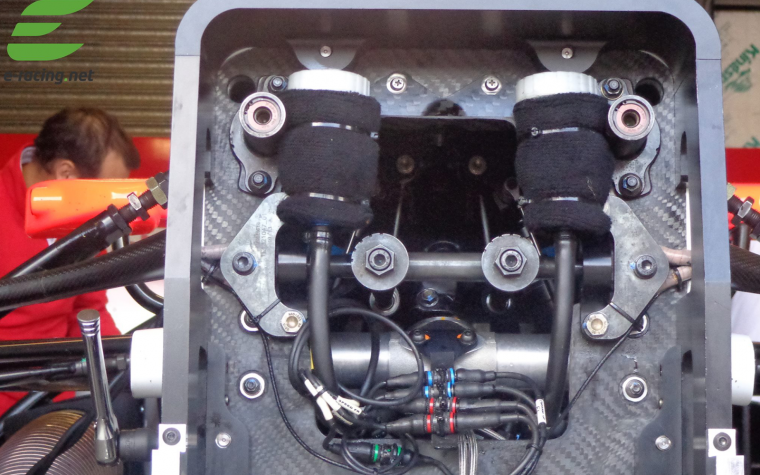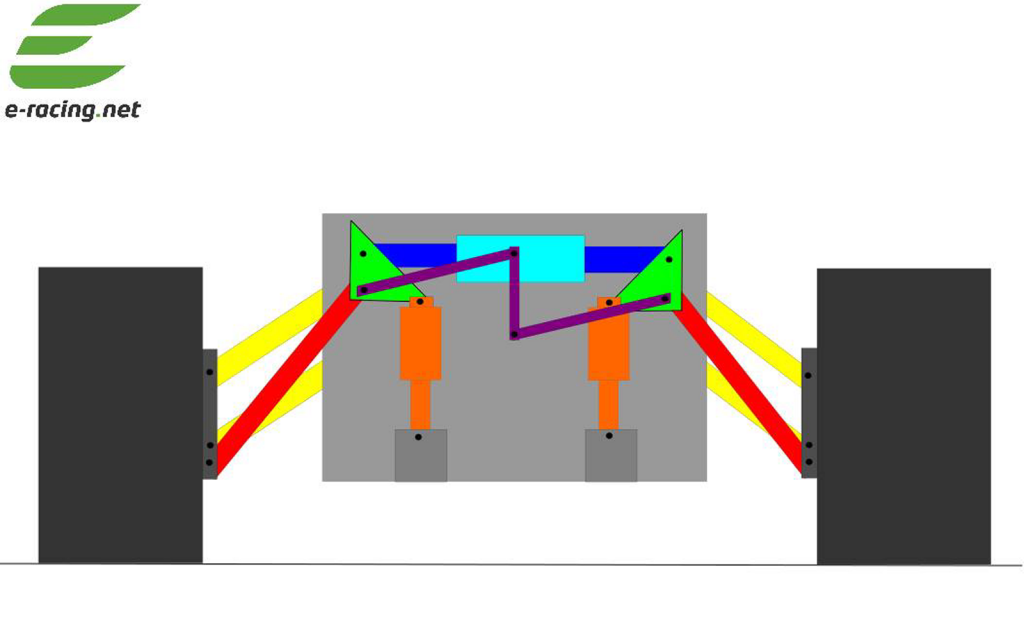Formula E Suspension Analysis
[vc_row][vc_column][vc_column_text]
For season two of the FIA Formula E championship, new rules were enforced by the FIA to allow for suspension changes on the Dallara chassis. This allowed for new geometries up front and new pick-up points for the wishbones at the rear. While there are gains at the rear, which can aid traction as well as the cars kinematics, the gain was not as much as the front suspension, which I will explain.
Upfront all cars use what’s called a torsion bar, which is all part of the pushrod/pullrod suspension concepts. Formula E cars use pushrod upfront, which gives you more overall control of the front axle, than what pullrod gives you. Pullrod not only takes up more space inside the bulkhead, but the tyre contact patch is not as good as what pushrod gives you. The Ferrari Formula One team has struggled with a pullrod concept.
They use a torsion bar, which has also been seen in LMP1 and F1 bulkheads, as it’s so good at what it does. The drawing below shows the setup as used by all Formula E teams, which I will give a rundown of. To the eye, pushrod looks simple, but there are many elements like damping and kinematics, which or play roles in tyre contacts patch.
The system works by having two wheels opposite the bulkhead which are highlighted in light grey. Which will have an upper and lower wishbones (yellow) coming from the wheel hub to the bulkhead. This is fairly conventional in single seater race cars. The wishbones are what mount the wheels to the chassis, and so don’t have much control.
As highlighted in red are the control arms, which come from the bottom of the wheel hub, through the chassis, and mount onto the green rocker arms. When the wheel is lifted as it goes over a bump in the road, the red control arm is pushed upwards, the action will then have moved the rocker arm, as it is pivot-mounted. The rocker arm will then turn clockwise, and apply its force from the control arm to the light blue torsion bar spring, as well as push some of the force onto the orange dampers below it. So the light blue heave spring and damper both take in the upwards force from the red control arm.
This, on the whole, sounds simple, but to make the car really work, you need to find the right balance to the damping force, as too soft will give the car’s body roll, where the chassis will roll in the corners. This means the driver can’t apply the accelerator pedal as quick as he would like, as the car is not straight. While this will be better over the kerbs, the pace would not be there per lap.
Often teams will over-damp their cars suspensions too, as a hard ride will get thrown around a lot more over the bumps. We have all seen time and time again in Formula E, that the cars, when they clip the kerbs fairly hard, the whole suspension will break up. While this is down to too brittle steel wishbones, over-damping will also be a factor in them breaking.
The biggest gain to this suspension type is that the wishbones are commonly of an aerofoil design, so that means the flow over them is fairly neat, which is not turbulent, but laminar, and will then help the rear of the car. The car will get the best aerodynamic effects when the car is level with the oncoming air. Any chassis tilt will result in a drop on overall car downforce. Furthermore it’s also very good at keeping the car level while absorbing bumps still, which is what you need, as ground effect can work that little bit better, and more speed can be carried into the corners, as the car has more downforce.
Teams now use anti-roll bars, as highlighted in purple. The gain here is that it helps add more rigidly to the front wheels, and stops the up and down motion from the wheel. Body roll can be reduced by up to 5% from them. Weight transfer is very important, as well as throttle application – the anti-roll bar will reduce the font sway build up, as it gives an even weight distribution on the front two tyres. The biggest gain is that the car can have less front sway as the anti-roll bar will take control of the forces from the tyres.
Where this system does hurt engineers is packaging. While you have a steering column and pushrod all fighting for the same space, adaptations are needed. The likes are Mahindra and Audi Sport ABT have raised their steering columns, so that they can accommodate the car’s front suspension changes. You can see the changes Mahindra applied to their bulkhead in the picture above.
The other flaw a pushrod gives you is that it’s so complex. There are many equations now needed to get a half decent setup. In Formula One, no team will be happy with their front suspension. There are too many elements to get right with this design. But when the system is working well, it will show up in lap time and driver confidence.
Overall suspension is one of those factors which will always keep evolving, as engineers crack down on the endless list of ways to improve the system. But for Formula E’s case, they have a very neat concept as used by some of the teams. It will only get better.
[/vc_column_text][/vc_column][/vc_row][vc_row][vc_column][vc_column_text]
Images courtesy of Stefan Ruitenberg
[/vc_column_text][/vc_column][/vc_row]






 No part of this website or any of its contents may be reproduced, copied, modified, adapted, used or distributed without the prior written consent of the author. e-racing.net is not responsible for the content of external sites or links.
No part of this website or any of its contents may be reproduced, copied, modified, adapted, used or distributed without the prior written consent of the author. e-racing.net is not responsible for the content of external sites or links.